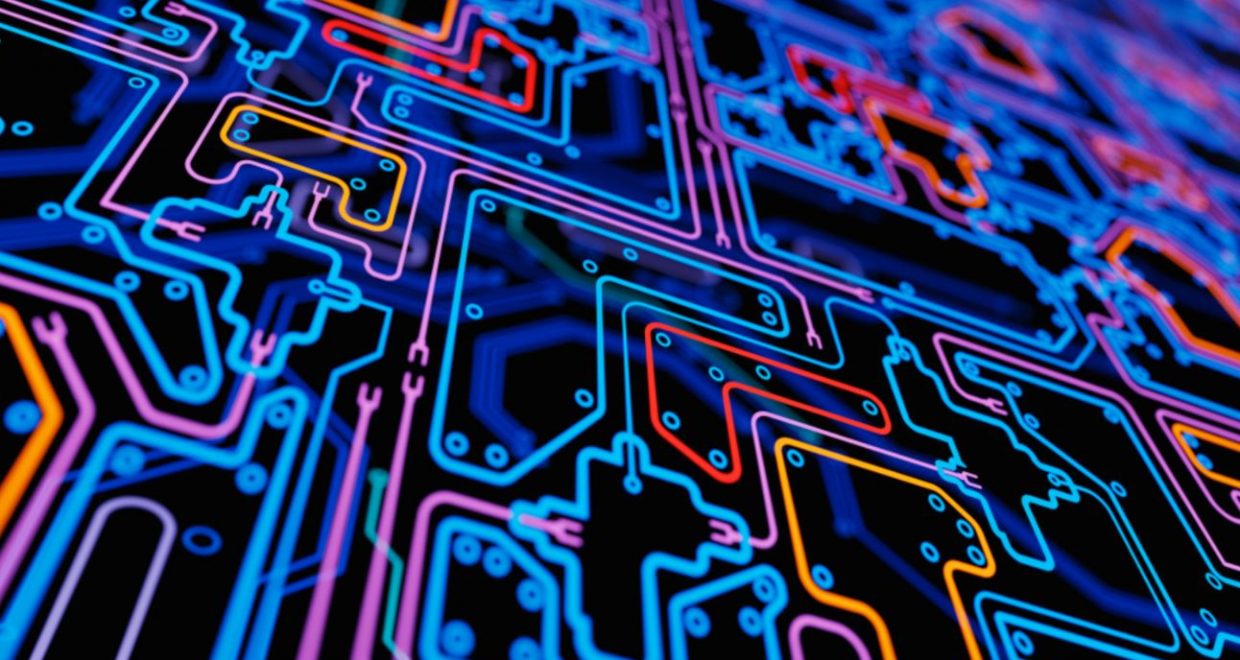Controlling magnetism using an electric field: Peering into the future of microelectronics
Without a doubt, the field of microelectronics has transformed our lives. Computers, smartphones, the devices and servers forming the backbone of the internet, computer chips in automobiles, airplanes, and appliances—all of these have changed the way we live today—and they all rely on microelectronics developments over the past several decades.
There are, however, several disruptive factors on the horizon that limit the present path and may alter the future directions of microelectronics. The Internet of Things (IoT—with a vast network of devices, vehicles, home appliances, sensors, and actuators all interconnected), the emergence of AI, and reaching the fundamental limits for Moore’s law, which has propelled microelectronics during recent decades, look to reshape our future.
A major factor is energy consumption of microelectronics. At current rates, this could jump from the current 4% of all energy usage to more than 20% in the coming years. This will become a serious issue and needs to be addressed in the context of the overall energy picture. Electrons in CMOS transistors that form the fundamental units of microelectronics are governed by the Boltzmann distribution in the current-voltage plot and macroscopically manifest as “the Boltzmann tyranny,” dictating the system behavior. This is primarily responsible for the high energy consumption in these devices.
In an article in the April 2019 issue of MRS Bulletin titled “Electric-field control of magnetism,” authors Ramamoorthy Ramesh (University of California, Berkeley and Lawrence Berkeley National Laboratory), S. Manipatruni (Intel Corporation), and Ian Young (Intel Corporation) argue that using electron spin instead of electron charge (as in conventional electronics) and controlling magnetism using an electric field could be key to drastically reducing energy consumption of devices. They demonstrate this through the use of multiferroic and magnetoelectric materials.
An attribute of a magnet is that reversal of an applied current direction (equivalent to reversing time) leads to a reversal of magnetic field direction. In order to couple magnetism to an electric field, such that the state and direction of magnetism can be manipulated through the application of an electric field, we require magnetism of some form to coexist with ferroelectricity; materials that exhibit this are called multiferroics. Coupling between these occurs in magnetoelectrics.
Through the use of the multiferroic bismuth ferrite system, the authors illustrate the richness of the materials physics available and possible applications of electric-field control of magnetism. They demonstrate that such control is possible, with voltages as low as 0.5 V or potentially even less. This translates to devices that will require much less energy than what is used by microelectronics devices and applications today, mitigating the anticipated high energy requirements on the present path. At the heart of this effort lies the discovery and design of new materials to control magnetism using electric fields.
Enjoy free access to this article, published in MRS Bulletin, for a limited time only. MRS Bulletin is a joint publication by the Materials Research Society and Cambridge University Press.







This is truly an interesting survey. Today each time we come across mobile devices anywhere in our home, in addition to devices that we carry with our bodies on a daily basis. In Brazil alone, we have passed more than 220 million cell phones, reaching a proportion of 107.29 cell phones per 100 inhabitants. I am even curious to know what the consumption of these small devices generates energy in total. And I only commented on cell phones, but there are notebooks, TVs, home appliances and many other types. Imagine that number worldwide.